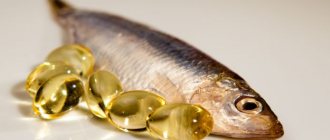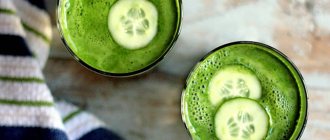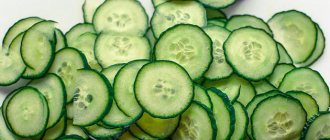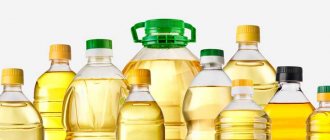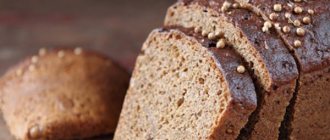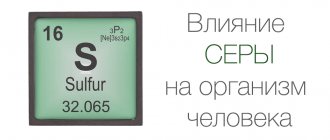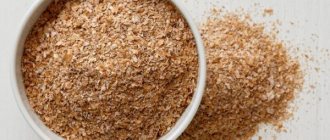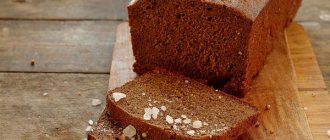Fats are organic compounds that are a combination of esters, including trihydric alcohol, as well as monobasic fatty acids.
Many people associate this substance with excess weight and bad cholesterol, which clogs blood vessels. Therefore, most people who are losing weight refuse fat-containing foods, but this is not always justified. Almost everyone is interested in what the role of fats is in the human body, what they are needed for and how they are classified.
The role of fats in human nutrition
Fat is one of the main components of nutrition, but its excess in the diet leads to obesity, deterioration of liver function, and an increased risk of heart attack.
Before excluding this vital product from your diet, you should find out what fats are for:
- normalization of metabolism;
- maintaining energy metabolism;
- strengthening the body's protective functions;
- activation of the gastrointestinal tract;
- stabilization of hormonal levels.
Fat in the human body plays an important role not only in the digestion process, but also in the functioning of all organ systems. The amount of fat in the daily diet should be 20-30%. That is, per 1 kg of weight of a person of normal build, on average, 1 gram of lipids is required.
Some types of fats can be synthesized in the human body, but there are essential lipids that can only be obtained from food.
Composition of fats
Fats are organic substances that are formed subsequent to the esterification of carboxylic acids and glycerol. The structure of the molecule is determined by the following formula:
Fats consist of elements: C – carbon; H – hydrogen; O – oxygen; R – radicals of carboxylic acids.
Properties of fats
Lipids are characterized by the following properties:
- hydrophobicity;
- ability to dissolve in organic solvents such as benzene, ether, dichloroethane;
- have the form of viscous liquids or solids;
- under the influence of surfactants they form stable aqueous emulsions;
The properties of fats may vary depending on the variety.
Types of dietary fats
The quality composition of the fats consumed is of great importance. They consist of special organic “building blocks” - fatty acids. Those according to their chemical structure are divided into monounsaturated, polyunsaturated, saturated and trans fats.
Monounsaturated fats
Monounsaturated fats are associated with several health benefits, including a reduced risk of heart disease and diabetes. One of the studies was based on 42 reports, in which 841 thousand subjects took part. It was concluded that proper fat intake leads to an overall reduction in the risk of mortality from all causes by 11%, and, for example, from stroke by 17%.
Studies have also shown that diets with monounsaturated fats lead to significant reductions in blood sugar, triglycerides, weight and blood pressure compared to diets high in carbohydrates.
In addition, monounsaturated fats increase the feeling of fullness, which leads to lower calorie intake.
What products do they contain?
- Olive oil
- Olives
- Macadamia nuts
- Almond
- Hazelnut
- Pistachios
- Peanut
- Avocado
- Pork
- Beef
Polyunsaturated fats
Polyunsaturated fatty acids contain two or more double bonds. These include Omega-3 and Omega-6.
According to the study. Omega-3 fatty acids are beneficial for autoimmune diseases, inflammation, and cardiovascular problems.
One study also concluded that taking Omega-3 supplements is effective against primary depression.
Omega-6 fats are found in most plant and animal foods.
Omega-3 rich foods:
- Salmon
- Sardines
- Herring
- Mackerel
- Anchovies
- Chia seeds
- Flax seeds
- Walnuts
Division of fatty acids depending on chemical structure and molecular bonds
Saturated fats
Eating too much saturated fat raises blood cholesterol levels, which can lead to heart problems. Cholesterol is vital for the body to produce testosterone, estrogen and bile acids, but in small quantities.
It is worth clarifying that not all saturated fats are so dangerous. Research shows that triglycerides in coconut and palm oil can increase metabolic rate and reduce calorie intake when consumed in moderation.
Many countries have national dietary guidelines (eg Britain, Australia, USA) and they agree that replacing some of the saturated fat in the diet with unsaturated fat is essential for healthy body function.
The World Health Organization states that saturated fat should account for less than 10% and trans fat less than 1% of total energy intake.
Healthy foods containing saturated fats:
- Dairy products
- Coconut oil
- Mascarpone cheese
- Cheddar cheese
- Lamb
Trans fats
These are the most harmful of fats. Especially those used in processed foods. They are produced by adding hydrogen to unsaturated fats.
Excessive consumption of trans fats can lead to a number of health problems: inflammation, unhealthy changes in cholesterol, impaired artery function, insulin resistance and excess weight.
Research shows that replacing trans fats with other fats can reduce the risk of heart disease by up to 40%, depending on the type and amount of fat replaced.
They are often found in margarine and other processed spreads. Food manufacturers sometimes add them to packaged foods such as crackers to extend shelf life.
What other products contain it?
- Fast food
- Mayonnaise
- Chips
- Semi-finished products (cutlets, pancakes, pies, pizza, etc.)
- Popcorn
- Bakery
Based on the above, healthy fats are distinguished from harmful ones. The last category, as well as the abuse of saturated fats, is considered harmful. The first two are considered useful.
In Ukraine, it is mandatory to indicate on the label the presence of trans fats in a product, but please note that it will be labeled “hydrogenated oil.” Read food labels and ingredients carefully.
What are fats needed in the body for?
Fats, like proteins, carbohydrates are the main organic compounds that are necessary for the normal functioning of all organ systems.
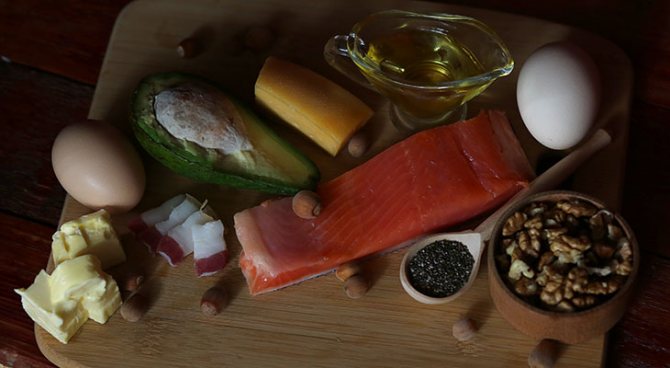
The main functions of fats in the body:
- Energy
During the breakdown of 1 gram of the substance, 9 kcal is formed, that is, significantly more than that of proteins and carbohydrates.
- Construction
Glycoproteins are essential fatty components of the membranes of our cells, which ensure normal metabolism. The outer lining of the lungs is made entirely of fat.
- Protective
The subcutaneous fat layer protects internal organs from damage and injury.
- Thermoregulatory
Lipids almost do not conduct heat, so it is easier for the body to tolerate low temperatures, avoiding hypothermia.
- Endocrine
Substances such as leptin (the satiety hormone), as well as estrogen and testosterone (sex hormones), are not produced in the absence of sufficient lipids.
- Antibacterial
Sebum contains a compound that prevents the development of pathogenic bacteria.
With a lack of fat, the overall functioning of systems in the body fails, fatigue, irritability appear, mental activity slows down, and the condition of the musculoskeletal and reproductive systems especially worsens.
What are proteins for?
Protein is the basis of the body. We get it from food. The body does not absorb it in the form in which it comes from food. It breaks it down into amino acids.
From amino acids, the body creates proteins that are characteristic of it. Also, when there is a deficiency of carbohydrates and fats, protein serves as a source of energy for the cell.
All internal organs and systems of the body are made up of proteins, including muscles, nails and hair.
Types of proteins in products:
- Simple and complex
The first consist only of the protein part - amino acids. Complex ones also contain non-amino acid components.
- Animals and plants
Animals – poultry, meat, fish, dairy products. Vegetables - peas, beans, soybeans, nuts.
- Complete and inferior
The former include all essential amino acids. Complete proteins include meat, fish, poultry, eggs, soy, and dairy products. In deficient ones, essential amino acids may not be all present and in small quantities or completely absent. Incomplete proteins - rice, bread, potatoes, pasta, nuts, beans.
Cheap protein products
Proteins from plant foods that have a shell of fiber or other substances are difficult to digest. These proteins include legumes, mushrooms, nuts, and whole grains.
It is possible to provide the body with a complete complex of essential amino acids only through a combination of animal and plant proteins.
Initially, a protein consists of an intricate chain of amino acids. During heat treatment, all amino acids are unraveled and arranged into a linear structure. Therefore, thermally processed protein is more easily absorbed by the body. In this case, it is important to choose the right temperature and cooking time. Without these factors, protein loses important amino acids.
Fats: concept, types, functions
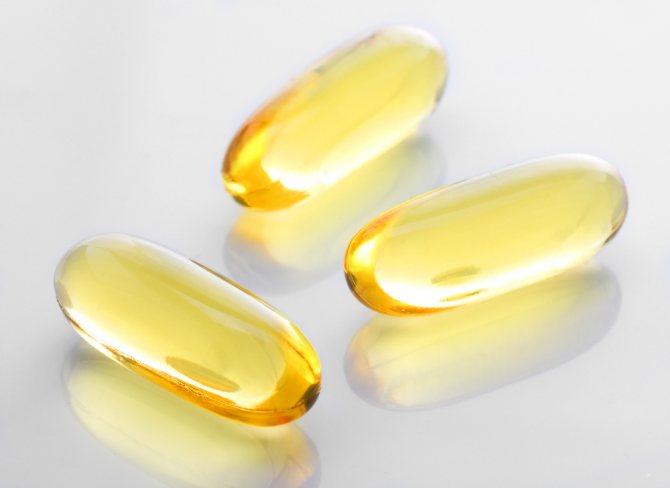
Fats are macronutrients, essential participants in the complete nutrition of every person. Your daily diet should include different fats, each of them performs its own function.
nutrition, lipids
From a physiological point of view, fats are an integral component of the trio of macronutrients that provide the basic needs of the human body. They are one of the main sources of energy for humans. Fats are a constituent element of all cells; they are necessary for the absorption of fat-soluble vitamins, provide thermal insulation of the body, and participate in the functioning of the nervous system and immunity.
Why are fats viewed negatively?

Even healthy fats are good in moderation. And excess not only spoils the figure, but also disrupts the functioning of the digestive system. Particular attention should be paid to monitoring saturated fats in the diet. The body produces these substances itself, plus they come from food.
Watch for the correct ratio of polyunsaturated fatty acids in the menu: a lack of omega-3 and an excess of omega-6 will lead to obesity.
When planning a diet, especially a dietary one, take into account not only visible fats, but also hidden ones - those that are included in dishes.
Avoid products with harmful trans fats – canned food, chips, cookies, confectionery and fast food – or eat them as little as possible.
What are carbohydrates for?
Carbohydrates are the main source of energy for the body. In the body, carbohydrates are converted into glucose - a universal fuel. This occurs due to hydrolysis. Hydrolysis is a chemical reaction between a substance and water.
Types of carbohydrates: simple and complex
Complex carbohydrates are good for the body. They are made up of many molecules. When complex carbohydrates enter the body, glucose in the blood rises slowly and evenly, and the pancreas works in a calm mode. This provides a long-term feeling of fullness.
Types of complex carbohydrates:
- starch – plant carbohydrate;
- glycogen – animal starch;
- fiber - dietary fiber.
Fiber can be soluble or insoluble . Insoluble fiber leaves the body in the same form in which it entered. When they pass through the gastrointestinal tract, they capture and remove waste and toxins. Soluble fiber turns into a jelly-like mass. It has a gentler effect on digestion. Soluble and insoluble fiber has a positive effect on digestion, helps cleanse the body, and reduces cholesterol and blood sugar levels. Eating fiber helps prevent diabetes.
Starch is converted into glucose. There is a lot of starch in potatoes, rice, and peas. There is resistant starch, which the body cannot digest. It passes through the digestive tract unchanged. Just like insoluble fiber, resistant starch is food for beneficial bacteria in the intestinal microflora. These bacteria are needed to break down, digest food, and protect the intestines. They are involved in metabolism, synthesis of amino acids and vitamins. Resistant starch promotes the growth of beneficial gut bacteria. Products with healthy starch - bananas, potatoes, corn, pearl barley, oatmeal, brown rice, lentils.
Glycogen is the storage form of glucose in humans and animals. It is also called animal starch. Glycogen is an energy reserve. Most of it is stored in the liver. In adults, the amount of glycogen in the liver can reach 100-120 g. Glycogen is also stored in the muscles - up to 1% of muscle mass. When the body does not have enough glucose to function, it releases it from glycogen, which is stored in the liver. Glycogen is converted back into glucose thanks to enzymes. The body uses glycogen from muscles during intense physical activity. Excess glycogen can negatively affect your figure.
Simple carbohydrates or “fast” carbohydrates have a simple structure. Therefore, they quickly provide energy.
Simple carbohydrates food list:
- ready-made breakfasts;
- White rice;
- preserves, jams;
- candies, cookies, ice cream;
- cakes, pastries, buns, white bread;
- semi-finished products, fast food;
- sweet fruits, vegetables;
- sauces;
- juices, sweet drinks.
The glycemic index of simple carbohydrates is always high - over 70. Simple carbohydrates have a sweet taste, and begin to break down right in the mouth. Within minutes of eating simple carbohydrates, your blood sugar levels rise. After 30 minutes it drops again to its original levels. We feel hungry again. Excess sugar in the blood turns into fat reserves. Eating them in large quantities can disrupt metabolism and cause excess weight, diabetes, atherosclerosis, stroke, and other diseases.
Simple carbohydrates are useful when the body needs to quickly restore energy - after hard physical work, fainting, or with a sharp decrease in blood pressure.
Facebook Comments

